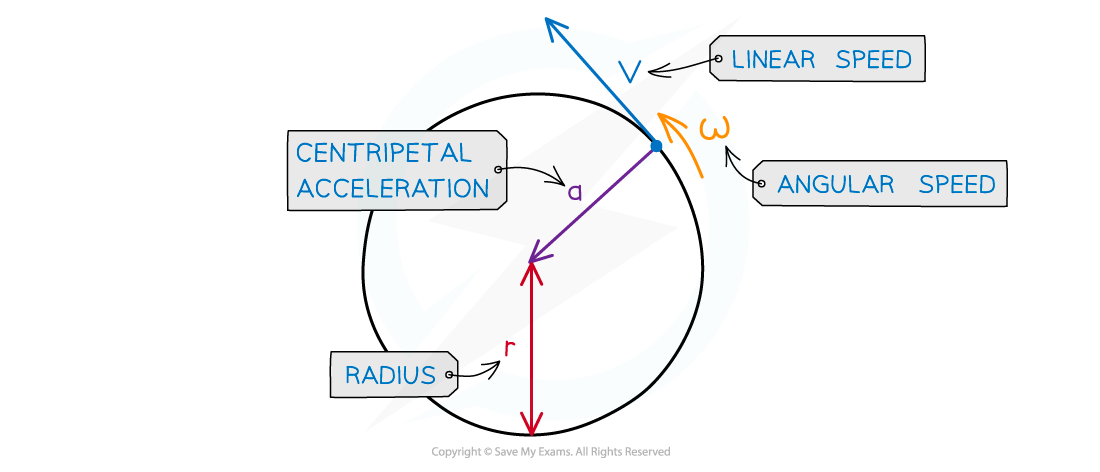Calculating Centripetal Acceleration (Cambridge (CIE) A Level Physics): Revision Note
Exam code: 9702
Calculating centripetal acceleration
Centripetal acceleration is defined as:
The acceleration of an object towards the centre of a circle when an object is in motion (rotating) around a circle at a constant speed
It can be defined using the radius r and linear speed v:
Where:
a = centripetal acceleration (m s–2)
v = linear speed (m s–1)
r = radius of the circular orbit (m)
Using the equation relating angular speed ω and linear speed v:
Where:
ω = angular speed (rad s–1)
These equations can be combined to give another form of the centripetal acceleration equation:
Centripetal acceleration

Centripetal acceleration is always directed toward the centre of the circle, and is perpendicular to the object’s velocity
Where:
a = centripetal acceleration (m s−2)
v = linear speed (m s−1)
⍵ = angular speed (rad s−1)
r = radius of the orbit (m)
Worked Example
A ball tied to a string is rotating in a horizontal circle with a radius of 1.5 m and an angular speed of 3.5 rad s−1.
Calculate its centripetal acceleration if the radius was twice as large and angular speed was twice as fast.
Answer:
Step 1: State acceleration in terms of angular speed
Step 2: Increase angular acceleration with twice the radius and twice the angular speed
The centripetal acceleration will be 8× bigger
Step 3: Substitute in the known values to calculate

Unlock more, it's free!
Did this page help you?